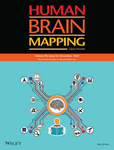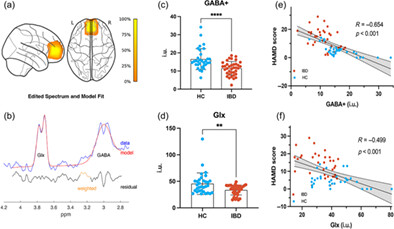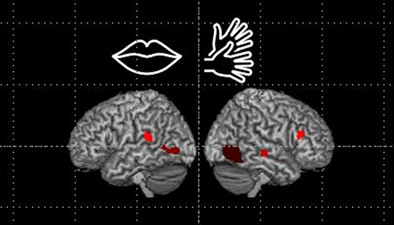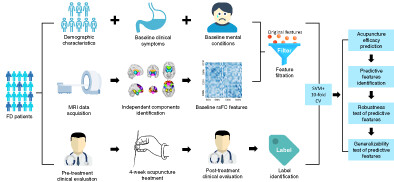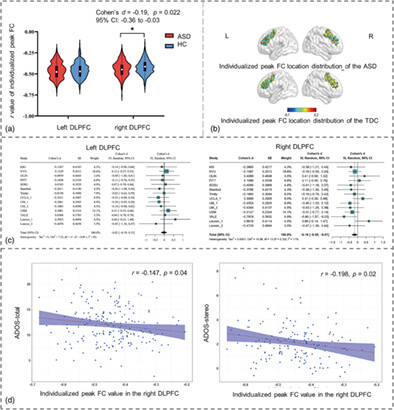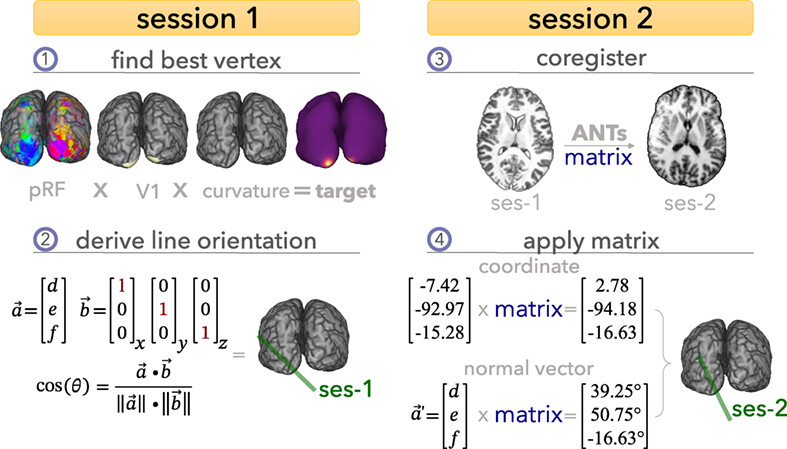Journal list menu
Export Citations
Download PDFs
ISSUE INFORMATION
TECHNICAL REPORTS
An automated pipeline for obtaining labeled ICA-templates corresponding to functional brain systems
- Pages: 5202-5211
- First Published: 30 July 2023
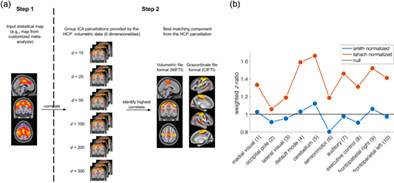
We propose a strategy to identify customized ICA-templates for neuroimaging analyses based on matching a statistical brain map (e.g., functionally-labeled) to the best matching group-ICA component from the Human Connectome Project (a). This method yielded systematically stronger contribution of gray matter versus white matter voxels in 9/10 demo cases (b).
The need for hemispheric separation in pairwise structural disconnection studies
- Pages: 5212-5220
- First Published: 04 August 2023
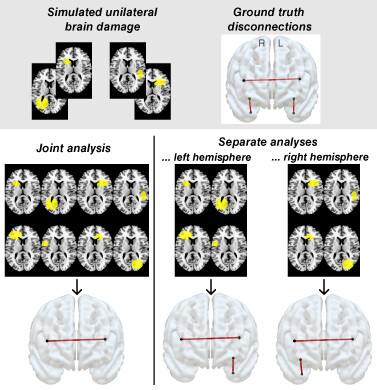
We simulated pairwise structural disconnections and compared two approaches of analyzing brain damage: unilateral lesions from both hemispheres together or separated by hemisphere. In contrast to the separate analyses, the joint analysis led to biased results: intra-hemispheric disconnections were statistically underpowered and therefore missed more often compared to inter-hemispheric disconnections.
Retinotopic connectivity maps of human visual cortex with unconstrained eye movements
- Pages: 5221-5237
- First Published: 09 August 2023
RESEARCH ARTICLES
Genetic and environmental influence on resting state networks in young male and female adults: a cartographer mapping study
- Pages: 5238-5293
- First Published: 20 December 2022
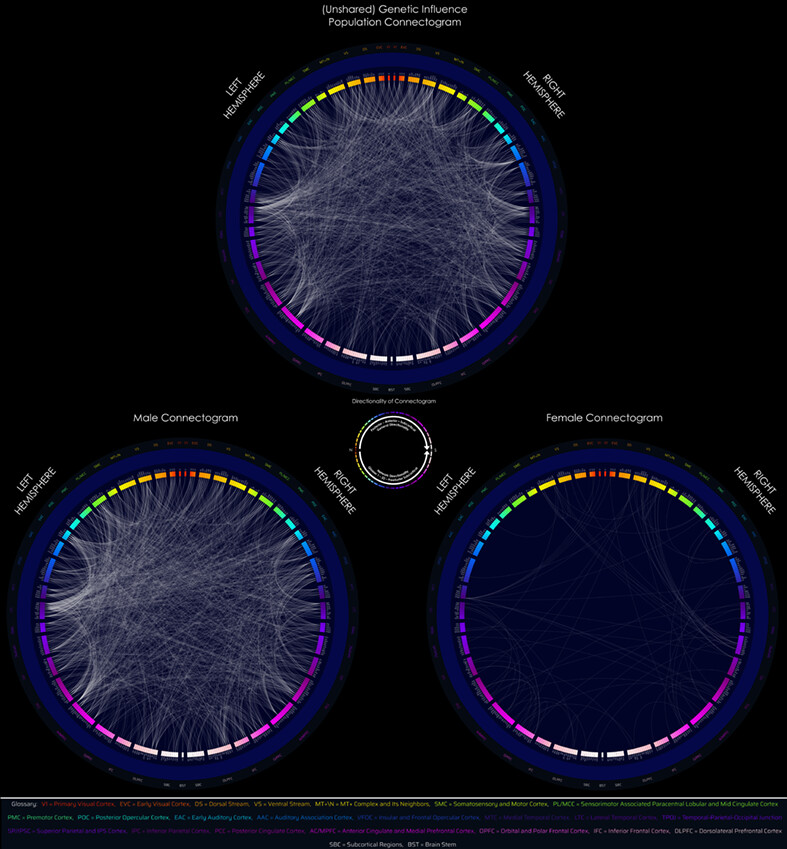
This work investigated genetic influence on low-frequency-oscillation-based functional connectivity in young males and female adults using a minimal assumption method (compared with standard ACE/ADE model approaches) with 65 monozygotic and 65 dizygotic twins' resting state functional MRI data. There was a high number of genetically-influenced posterior–posterior (visual/parietal/temporal) brain region functional connections, a low number of genetically-influenced posterior/anterior brain region functional connections, and a very low number across noncortical/subcortical regions at the population level. Males had greater genetic influence interplay across eDMN and TPNs than females, and had over 8.5-19.1 times more genetically influenced functional connections than females (with similar, although different proportionate trends across nonadditive genetics in the ACE/ADE model). These preliminary (young adult cohort specific) findings may suggest sex-specific individual differences in the functional connectivity of the resting state brain in terms of genetic influence in young adults. Furthermore, by employing the ACE/ADE model, it may be that environmental influences on individual differences are substantially greater than that of genetics, regardless of sex, notably frontally but brain-wide in general.
High-accuracy machine learning techniques for functional connectome fingerprinting and cognitive state decoding
- Pages: 5294-5308
- First Published: 27 July 2023
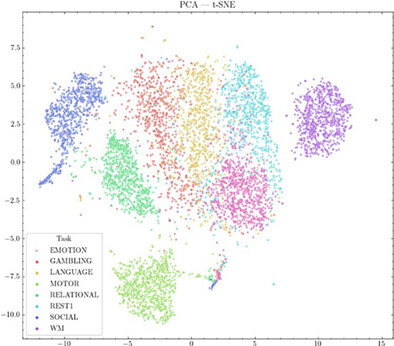
Using Human Connectome Project data, we build upon recent studies examining brain-based fingerprints of individual subjects and cognitive states based on cognitively-demanding tasks that assess, for example, working memory, theory of mind, and motor function. Our approach achieves accuracy of up to 99% for both identification of the subject of an fMRI scan, and for classification of the cognitive state of a previously unseen subject in a scan.
A practical model-based segmentation approach for improved activation detection in single-subject functional magnetic resonance imaging studies
- Pages: 5309-5335
- First Published: 04 August 2023
Disability and persistent motor deficits are linked to structural crossed cerebellar diaschisis in chronic stroke
- Pages: 5336-5345
- First Published: 20 July 2023
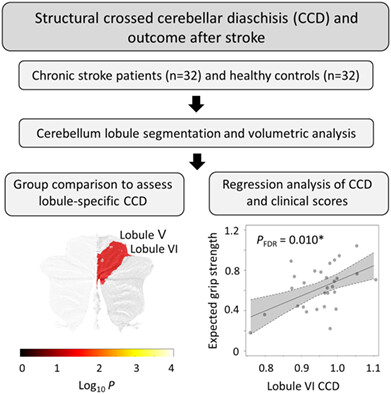
Lobule-specific contralesional atrophy as a surrogate of structural crossed cerebellar diaschisis (CCD) was assessed in a group of 32 chronic stroke patients and healthy controls. Group comparisons revealed structural CCD of the whole cerebellum and particularly of lobules V and VI in stroke patients. The observed volume reduction of lobule VI was associated with higher levels of disability and motor deficits.
Altered dynamic brain activity and functional connectivity in thyroid-associated ophthalmopathy
- Pages: 5346-5356
- First Published: 29 July 2023
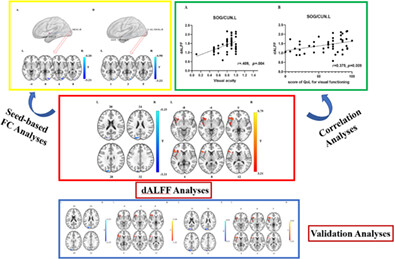
We explored the spatiotemporal alterations of both brain activity and connectivity in thyroid-associated ophthalmopathy (TAO) by using dynamic amplitude of low-frequency fluctuation and dynamic functional connectivity, respectively. We also identified correlations between the abnormal dynamic brain activity in the left occipital area and the visual deficits in TAO patients.
The role of neurotransmitters in mediating the relationship between brain alterations and depressive symptoms in patients with inflammatory bowel disease
- Pages: 5357-5371
- First Published: 02 August 2023
Preterm-birth alters the development of nodal clustering and neural connection pattern in brain structural network at term-equivalent age
- Pages: 5372-5386
- First Published: 04 August 2023
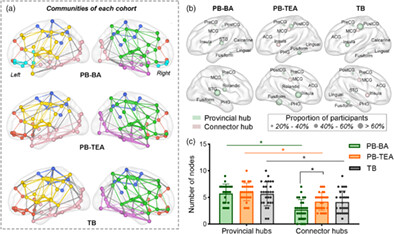
Our findings demonstrate a topological reorganization of the structural network occurs during the perinatal period that may prioritize the optimization of global network organization to form a more efficient architecture; and local topology is more vulnerable to premature birth related factors than global organization of the structural network.
Association between gene expression and functional-metabolic architecture in Parkinson's disease
- Pages: 5387-5401
- First Published: 22 August 2023
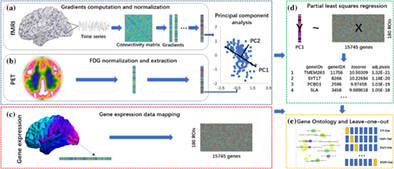
The abnormal functional gradients and glucose metabolism pattern are highly similar in Parkinson's Disease. The functional-metabolic architecture was associated with genes of metabolic, catabolic, DNA and RNA transcription and biosynthesis processes. The visual and somatomotor networks are most influential on the association between functional-metabolic architecture and transcriptomic gene sets.
Social perception in deaf individuals: A meta-analysis of neuroimaging studies
- Pages: 5402-5415
- First Published: 23 August 2023
Clinical-functional brain connectivity signature predicts longitudinal symptom improvement after acupuncture treatment in patients with functional dyspepsia
- Pages: 5416-5428
- First Published: 16 August 2023
Single-subject cortical morphological brain networks across the adult lifespan
- Pages: 5429-5449
- First Published: 14 August 2023
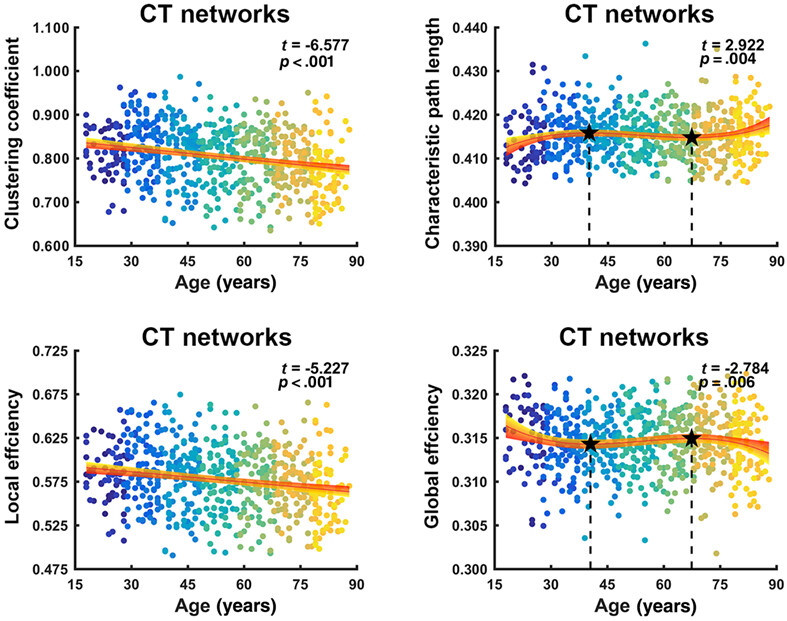
This study demonstrated profound age-related changes on single-subject morphological brain networks across the adult lifespan that were mainly embodied in cortical thickness-based networks, involved in frontal regions and highly connected hubs, concentrated on short-range connections, characterized by linear changes, and susceptible to connections between limbic, frontoparietal and ventral attention networks.
Abnormal individualized peak functional connectivity toward potential repetitive transcranial magnetic stimulation treatment of autism spectrum disorder
- Pages: 5450-5459
- First Published: 11 September 2023
Cognitive inflexibility is linked to abnormal frontoparietal-related activation and connectivity in obsessive-compulsive disorder
- Pages: 5460-5470
- First Published: 08 September 2023

In this study, we adopt the simple task-switching paradigm by creating switch and repeat blocks to analyze whole-brain activation and perform gPPI analysis, to further understand the neural mechanisms of impaired cognitive flexibility in patients with obsessive-compulsive disorder (OCD). This study found higher switch costs and slower response time in patients with OCD, suggesting that their cognitive inflexibility and strategy of pursuing accuracy at the expense of reaction time. The compensatory activity within the frontoparietal network (FPN) and alterations of interaction between FPN and default mode network may underlie the neural mechanism of difficulties in task switching.
A selection and targeting framework of cortical locations for line-scanning fMRI
- Pages: 5471-5484
- First Published: 22 August 2023
Mapping the macrostructure and microstructure of the in vivo human hippocampus using diffusion MRI
- Pages: 5485-5503
- First Published: 24 August 2023
Adolescents with ADHD and co-occurring motor difficulties show a distinct pattern of maturation within the corticospinal tract from those without: A longitudinal fixel-based study
- Pages: 5504-5513
- First Published: 22 August 2023
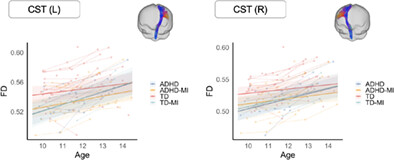
Children with ADHD showed atypical microstructure within the cortico-spinal tract (CST) at 10 years, regardless of motor ability later in life. These CST abnormalities persisted into adolescence when ADHD co-occurred with motor problems, yet resolved for those with ADHD alone. Maturation within motor networks may explain motor difficulties in ADHD.
ERRATUM
Erratum to: The neural correlates of value representation: From single items to bundles
- Page: 5514
- First Published: 04 September 2023




